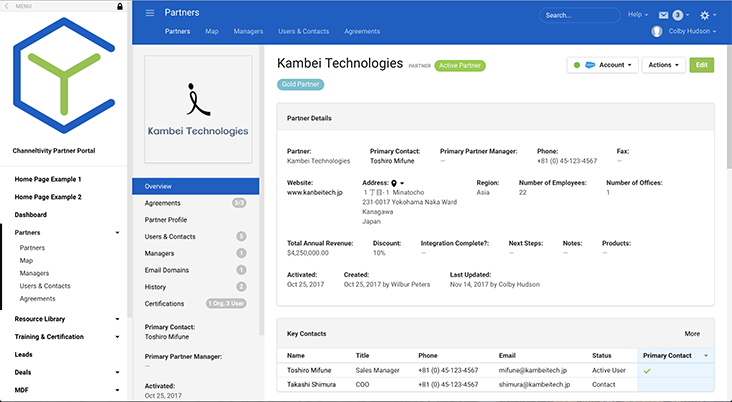Channel Partner Profile: Your List of Essential Data
A channel partner profile might not be the flashiest part of your partner program or PRM portal, but if created thoughtfully, having a strong profile can be one of the most impactful elements for a successful program. Having the right partner profile will help you recruit and manage new channel partners as well as aid in managing and retaining existing partners.
But what should be part of your ideal partner profile for your channel program?
When creating or updating your partner profile, start by analyzing what data will help you better understand your channel partners and their capabilities. It is easy to focus on only the organization’s attributes–size, customer lists, other brands they are selling—which are important, but you are making the choice to put your brand in the hands of others. As such, consider treating partner selection like you’re hiring an internal sales rep. As part of your data collection, make sure you include a deeper dive and tracking of their people. Connect with their team on LinkedIn.
These are examples of the types of partner profile data collected by successful Channel Programs we work with:
- General Business: Typical profile elements include partner location, years in business, number of employees also on the channel team (technical/sales/marketing), fiscal year
- Geographic Coverage: Identify your partners’ geographic coverage abilities and strengths. Do you have geographic gaps?
- Key Players: Like we discussed above, know the team you are working with. Identify key decision makers, sales & marketing leadership, finance, & technical contacts early and establish the right relationships. What’s the turnover rate at the organization? What’s their sell success rate been?
- Specializations: Identify what specialties your partners have. Partners should bring something to the table that you cannot. Work with them to build a strong channel partnership that leverages those strengths and then document them in their partner profile.
- Complementary/Competitive Offerings: Understand current products and solutions sold by the partner. Which align with your offering? Most partners have a focus area of primary solutions they offer. Identifying this upfront will allow you to connect with the right partners early.
- Customer Lists: Having early conversations about joint and target customers will create alignment and opportunity within your partner’s current client roster.
- Marketing/Sales Capabilities: Understand the tools your partners are using, including CRM and marketing platforms, will help you determine their ability to sell and market your solutions.
Profiling your channel partners will help you identify trends within your partner population and identify the characteristics of you successful, and less successful, partners. This isn’t a one-time project, but a living/evolving profile. Don’t be afraid to adjust your profile over time. Going beyond the profile basics will enable you to gather information that is relevant to your business and to find the partners that best align with your program goals.

Are You Ready for a Channel Program? Channel Reboot?
Convert Signed Partners to Revenue Generators in 5 Steps